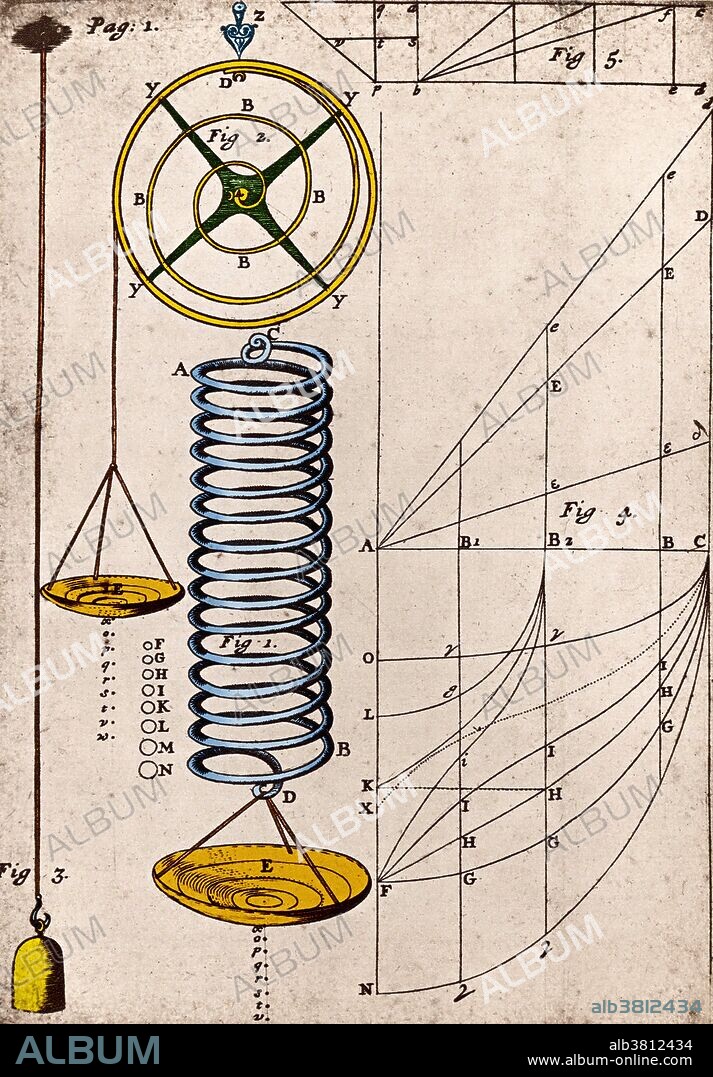alb3812434
Hooke's Law, Principle of Physics, 1678

|
Add to another lightbox |
|
Add to another lightbox |



Title:
Hooke's Law, Principle of Physics, 1678
Caption:
Hooke's Law, Principle of Physics, 1678. Hooke's law is a principle of physics that states that the force F needed to extend or compress a spring by some distance X is proportional to that distance. That is: F = kX, where k is a constant factor characteristic of the spring: its stiffness, and X is small compared to the total possible deformation of the spring. The law is named after 17th century English physicist Robert Hooke. He first stated the law in 1660 as a Latin anagram. He published the solution of his anagram in 1678 as: ut tensio, sic vis ("as the extension, so the force" or "the extension is proportional to the force").
Credit:
Album / Science Source
Releases:
Model: No - Property: No
Rights questions?
Rights questions?
Image size:
2406 x 3455 px | 23.8 MB
Print size:
20.4 x 29.3 cm | 8.0 x 11.5 in (300 dpi)
Keywords:
1678 • 17TH CENTURY • ART • ARTWORK • CELEBRITIES • CELEBRITY • COLORIZED • DIAGRAM • DRAWING • ENHANCEMENT • FAMOUS • FORCE • HISTORIC • HISTORICAL • HISTORY • HOOK'S LAW • HOOKE • HOOKS LAW • ILLUSTRATION • ILLUSTRATIONS • IMPORTANT • LAW OF PHYSICS • NOTABLE • PHYSICS • PRINCIPLE OF PHYSICS • ROBERT HOOKE • SCIENCE • WELL-KNOWN
 Pinterest
Pinterest Twitter
Twitter Facebook
Facebook Copy link
Copy link Email
Email

